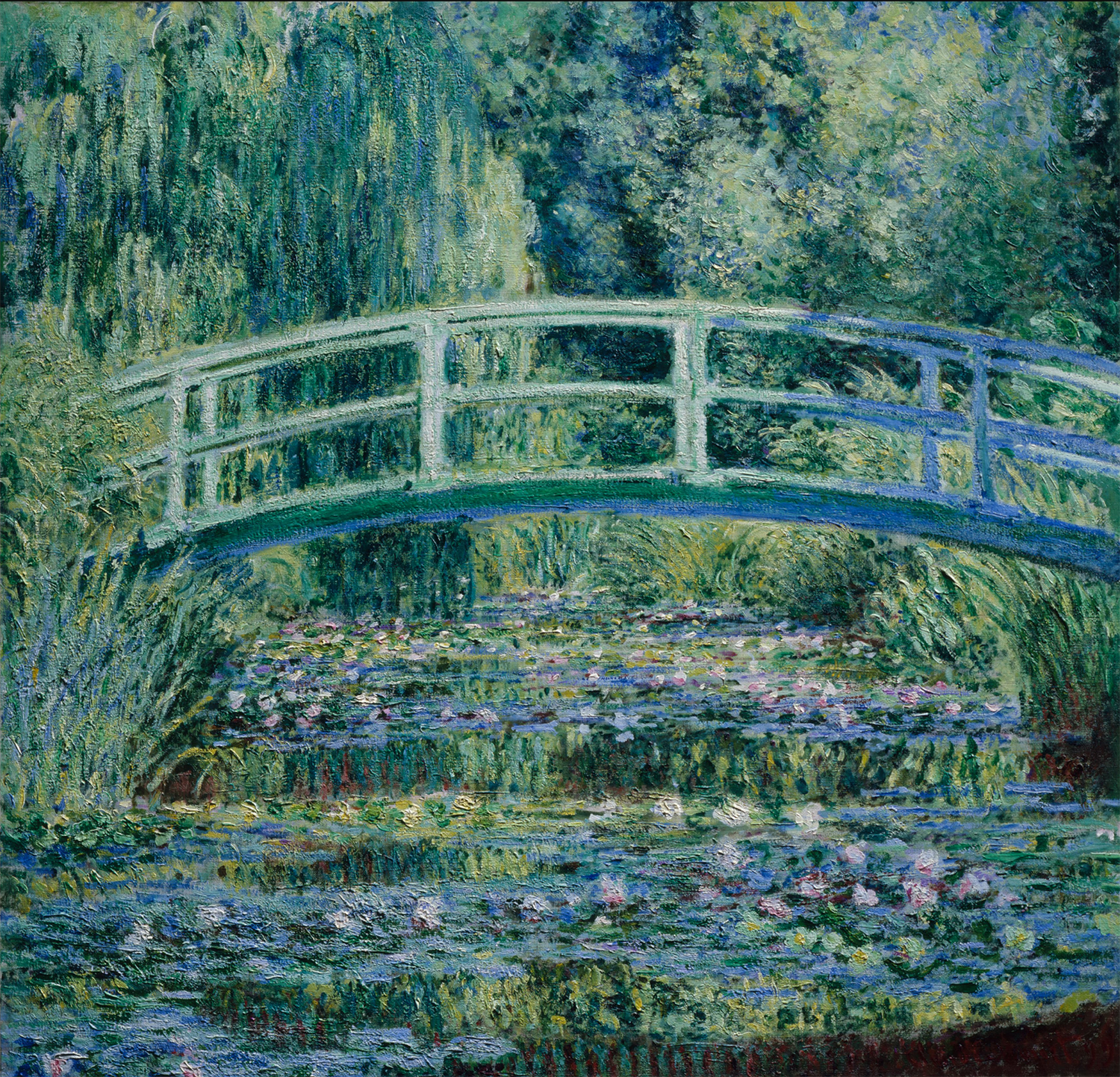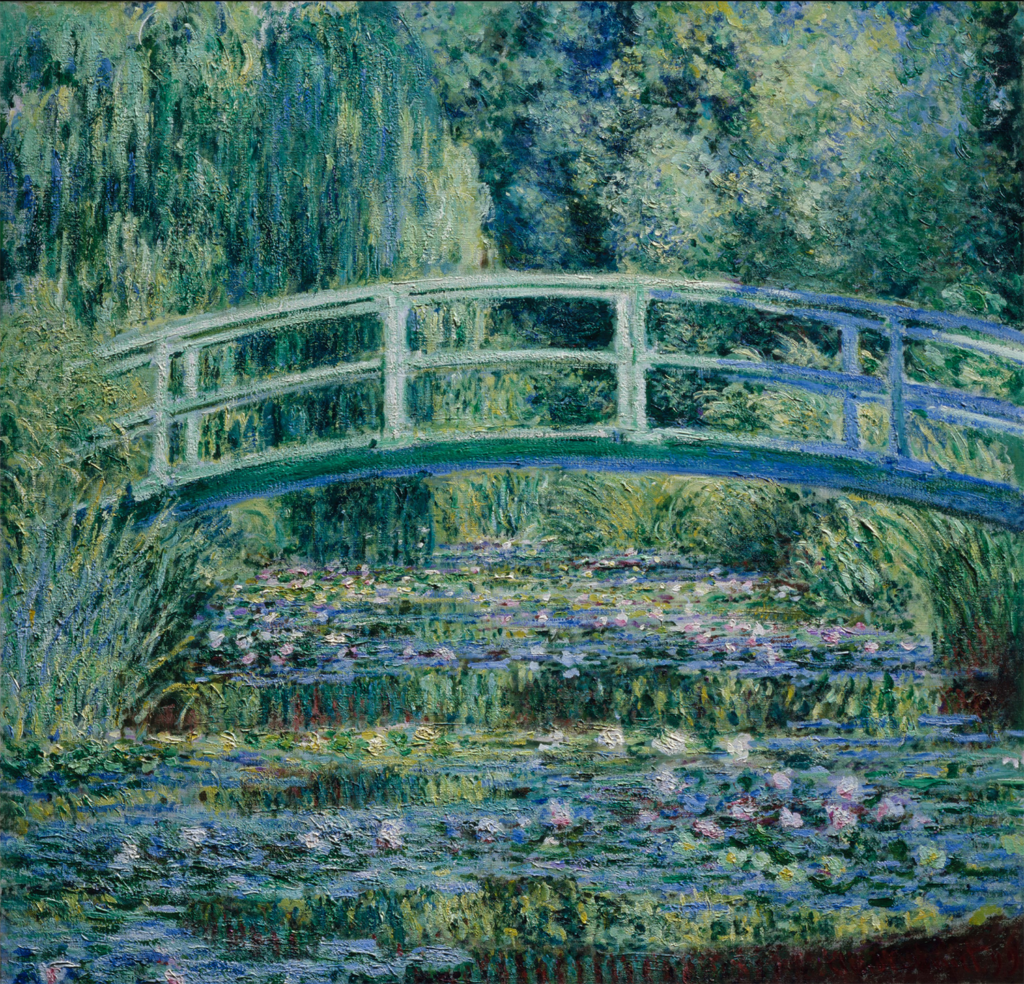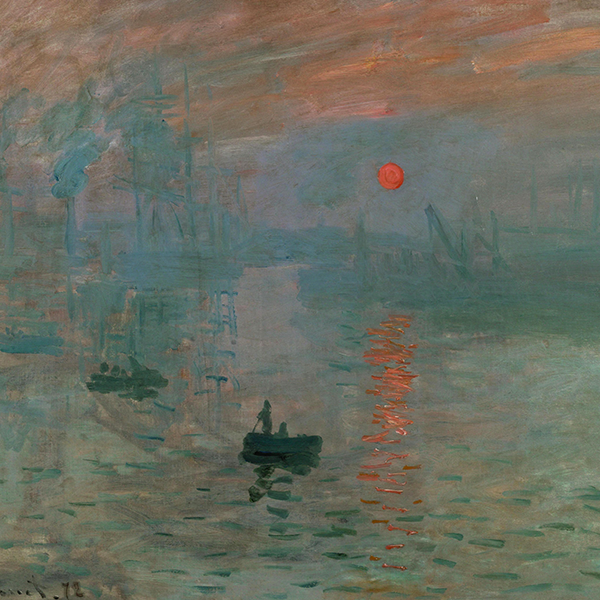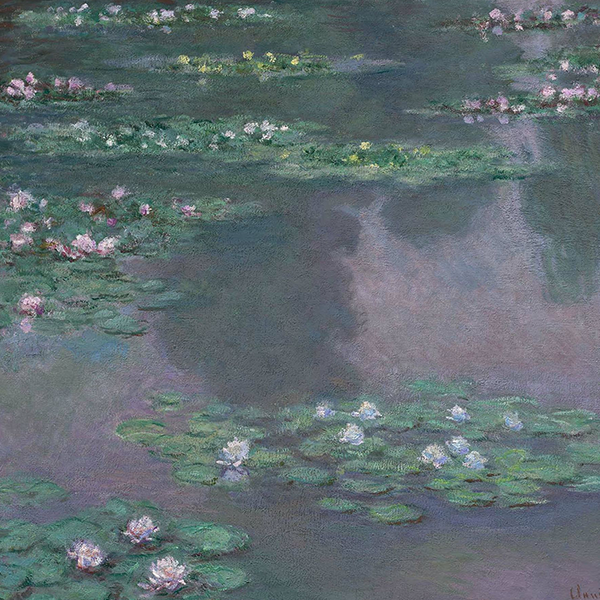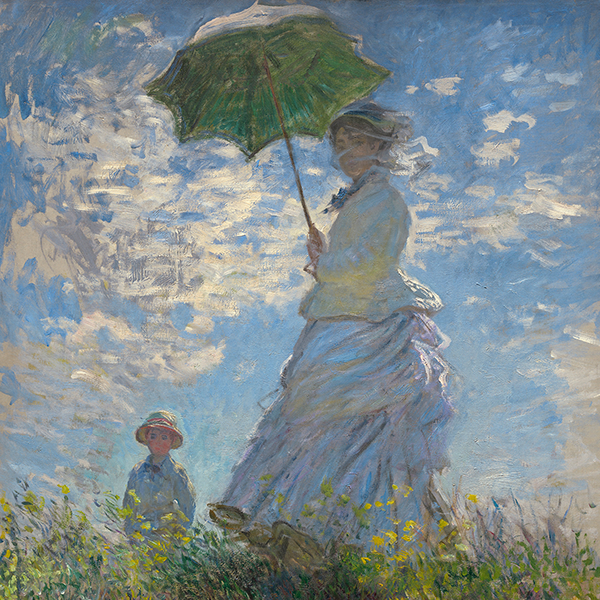Water Lilies and Japanese Bridge
Claude Monet, 1889, Giverny
After ten years in Giverny, Claude Monet in 1883 envisioned turning a small pond on an adjacent parcel of land into an Asian-influenced water garden. While there was some local resistance to the introduction of foreign plants into the region, Monet managed to win approval to expand the pond by diverting water from the Epte River. He surrounded the basin with arrangements of flowers, trees, and bushes, and by 1884 filled it with water lilies. About a decade later, in 1895, he added a Japanese-style wooden bridge in 1895. However, it was still a few years, before this garden became his ongoing motif. But once he started painting his harden in Giverny, he never stopped, making them the obsessive focus of his intensely searching work for the next quarter century.
“It took me a long time to understand my water lilies…. I grew them without thinking of painting them…. And then, all of a sudden, I had the revelation of the enchantment of my pond. I took up my palette.”
Painting Conposition
Lush and luminous, the beautiful Japanese Bridge was painted by Monet in 1889. The painting immerses us in the physical experience of being in the garden. With the bands of the blue bridge suspended like a canopy near the top of the canvas and no sky to be seen, the water and billowing foliage fill the visual field, immersing the viewer in the verdant, brightly colored waterscape. Cool blue and green tones predominate, but are balanced by the pink, white, and yellow lilies floating in complex pattern across the surface of the water from near to far. Controlled, vertical dabs of paint define the sparkling greenery and its fleeting reflection in the water, while the more fluid lilies are rendered with broad, textured, horizontal strokes that emphasize the shared physicality of the paint and the landscape.
Deeply admiring nature’s central role in Japanese culture, Monet here fuses Japanese motifs with his impressionist palette and brushstrokes to posit a hybrid, transcendent understanding of nature’s primacy. He first seriously explored translating the garden into paint in the summer of 1899, producing a series of 12 views of its light-dappled surface, arching footbridge, and surrounding flora. He exhibited the paintings, including this one, at the Durand-Ruel Gallery in Paris the following year.
The original painting can today be seen at the National Gallery in Washington D.C.

